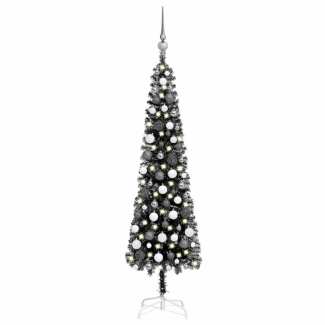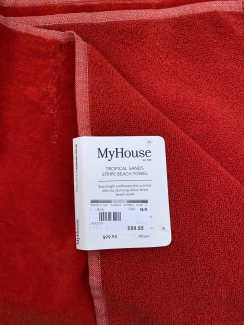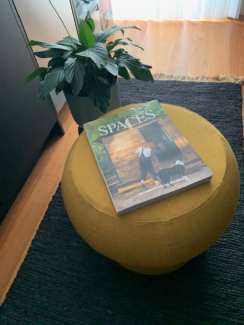Welcome to the ultimate guide to upcycling furniture, where we delve into the art of transforming old pieces into fabulous, one-of-a-kind masterpieces. In this guide, we’ll explore the joy of breathing new life into secondhand furniture, all while embracing sustainability and reducing waste. As we celebrate Plastic Free July, there’s no better time to embark on an upcycling adventure.
Choosing the Perfect Furniture for Upcycling
So, you’re ready to dive into the exciting world of furniture upcycling. But where do you start? Let’s dig deeper into finding the ideal furniture pieces to work with, ensuring that your upcycled creations shine with unique charm and character.
Look for Sturdy Foundations
When scouting for furniture to upcycle, keep an eye out for sturdy wooden chairs, tables, or dressers. Solid construction is key, as it provides a strong foundation for your creative endeavour. Check for stability, ensuring that the structure is sound and can withstand the transformation process. Avoid pieces with major structural damage or wobbly legs unless you’re up for some advanced repairs.
Seek Unique Design Elements
What sets upcycled furniture apart from the rest? It’s those eye-catching design elements. As you browse through second hand furniture for potential candidates, keep an open mind and look for pieces with interesting details that catch your attention. Intricate carvings, elegant curves, or distinctive hardware can completely transform your upcycled masterpiece, so embrace the opportunity to create something truly one-of-a-kind.
Explore Secondhand Marketplaces like Gumtree
Secondhand marketplaces like Gumtree are treasure troves for finding furniture gems. Someone’s dusty wooden chair, outdated coffee table, or old dresser might be your dream upcycling project. Embrace the thrill of the hunt as you scroll through listings, discovering unique pieces just waiting to be upcycled. Gumtree’s vibrant community offers a diverse range of furniture options for budgets of all sizes.
Essential Tools and Paint Types for Upcycling
Are you ready to embark on your furniture upcycling adventure? Great. It’s time to gather the essential building and upcycling materials and explore the wonderful world of paint options. With the right gear in hand, you’ll be well-equipped to revitalise your furniture. Let’s dive deeper into the tools and paint types that will help you achieve stunning transformations.
Trusty Tools for the Job
To bring out the magic in your DIY projects, you’ll need a few reliable tools. Here’s a list of essentials:
- Sandpaper: A variety of grits will come in handy for smoothing surfaces, removing old finishes, and prepping your furniture for paint.
- Paintbrushes: Invest in a range of sizes to handle different areas and details. Flat brushes work well for large surfaces, while smaller brushes are perfect for intricate work.
- Screwdriver: A trusty screwdriver will be your go-to tool for removing and attaching hardware, such as drawer pulls or hinges.
- Paint Scraper: A paint scraper will be invaluable when you need to remove stubborn layers of old paint or varnish.
These tools will become your trusty companions when repurposing furniture, helping you transform your furniture pieces with finesse and precision.
Exploring Paint Options
Now, let’s talk about paint—the transformative force that will bring your upcycled furniture to life. While there are countless paint options available, we recommend considering the following types:
- Chalk Paint: Known for its matte finish and vintage appeal, chalk paint is a popular choice among upcyclers. It’s easy to work with, requires minimal surface preparation, and comes in a variety of beautiful colours.
- Milk Paint: If you’re aiming for an authentic, antique feel, milk paint is an excellent option. Made from natural ingredients like milk protein, lime, and pigments, milk paint creates a unique, subtly weathered appearance. It can be used to achieve both rustic and refined finishes.
- Low VOC Paints: As conscious upcyclers, we care about the environment and our health. Low VOC (volatile organic compounds) paints are eco-friendly alternatives that emit fewer harmful chemicals, reducing indoor air pollution. They come in a variety of finishes and colours, ensuring you can achieve the desired look while minimising environmental impact.
Health and Safety Precautions
As passionate upcyclers, we want you to have an amazing time transforming your furniture pieces while keeping safety at the forefront. To ensure your wellbeing throughout the upcycling process, let’s take a closer look at some crucial health and safety precautions.
Wear Protective Gear
Before you embark on your upcycling adventure, make sure to equip yourself with the necessary protective gear:
- Gloves: Protect your hands from potential injuries, hazardous substances, and sharp edges by wearing sturdy gloves. Opt for gloves that offer good dexterity, allowing you to comfortably work with tools and materials.
- Goggles: Safeguard your eyes from dust, debris, and chemical splashes by wearing safety goggles. They’ll keep your vision clear and protect one of your most valuable assets.
- Mask: Shield your lungs from harmful fumes, dust, and particles by wearing a mask. Choose a mask that provides adequate protection against airborne hazards, particularly when sanding or working with paints or solvents.
Keep Things Well-Ventilated
Proper ventilation is essential during your upcycling endeavours, especially when working with paints, solvents, or other chemicals. Follow these tips to ensure a well-ventilated workspace:
- Open Windows and Doors: If possible, work in a well-ventilated area with windows and doors open to allow fresh air to circulate. This helps reduce the concentration of fumes and dust particles.
- Use Fans or Ventilation Systems: Consider using fans or ventilation systems to improve air circulation and create a healthier workspace. Position fans strategically to direct air away from your face and towards open windows or doors.
Dispose of Materials Responsibly
Once you’ve completed your upcycling project, it’s essential to dispose of any hazardous materials responsibly. Here’s how you can do your part:
- Follow Local Regulations: Check your local council’s regulations regarding the disposal of hazardous materials. Some areas have specific guidelines for the proper handling and disposal of paint cans, chemical containers, and other potentially harmful substances.
- Recycle and Reuse: Whenever possible, recycle or reuse materials used during the upcycling process. Empty paint cans can often be recycled, and leftover paint can be stored for future projects or donated to community organisations.
Getting Started
Are you a beginner or first-timer in the world of furniture upcycling? Fear not. We’ve got you covered with some essential tips and guidance to help you kick-start your upcycling journey with confidence. Let’s jump into the exciting world of transforming old furniture into stunning masterpieces.
Start with Small Projects
If you’re new to upcycling, it’s best to begin with smaller projects that are less overwhelming. Choose a side table, a chair, or a simple wooden box as your first upcycling endeavour. A fresh coat of paint or new handles can go a long way, and starting small allows you to learn and develop your skills while gaining confidence in your abilities. As you gain experience and refine your techniques, you can take on larger and more complex projects.
Plan and Visualise
Before diving into your upcycling project, take some time to plan and visualise the end result. Consider the style, colours, and design elements you want to incorporate. Look for inspiration in magazines, online platforms, or even nature. Creating a mood board or sketching your upcycled furniture ideas can help you stay focused and bring your vision to life.
Experiment with Paint Techniques
As a beginner, don’t be afraid to experiment with different paint techniques. Consider distressing, layering colours, or using stencils to add visual interest to your furniture piece. Trying out different techniques will not only expand your skills but also make each piece uniquely yours.
Embrace Imperfections
Remember, upcycling is about embracing imperfections and adding character to your furniture. Don’t stress over achieving a flawless finish—small blemishes and wear can actually enhance the charm and authenticity of your upcycled piece. Embrace the beauty of imperfection and let it tell a story.
Learn from Others
Joining online communities or attending local workshops can be a fantastic way to connect with other upcyclers, gain inspiration, and learn valuable tips and tricks. Engaging with experienced upcyclers allows you to tap into a wealth of knowledge and guidance that can accelerate your learning process.
Enjoy the Process
Above all, remember that upcycling is a creative and enjoyable journey. Embrace the process, allow yourself to make mistakes and learn from them. Each upcycled piece you create is a unique expression of your creativity and passion for sustainability. So, have fun, enjoy the journey, and take pride in your upcycled masterpieces.
Your First Upcycling Project
If you’re a first-time upcycler, revamping something simple is the perfect way to start. Enter the side table. Side tables offer ample surface area to experiment with different techniques, and they can truly transform your room’s aesthetic. Here’s a step-by-step guide to help you tackle your first dresser upcycling project:
1. Assess the Side Table
Start by assessing the table’s condition. Look for any repairs or adjustments needed, such as loose drawer handles or uneven surfaces. Consider whether you want to keep the dresser’s original design or if you’re open to making more drastic changes. This initial evaluation will help you plan your DIY project effectively.
2. Prep and Clean
Thoroughly clean the table, removing any dust, dirt, or grime. If it has an existing finish, consider whether you want to remove it entirely or work with it as a base for your new design. Lightly sand the surfaces to create a smooth canvas for your paint or stain.
3. Choose a Design Concept
Decide on a design concept that matches your personal style and complements the room. Are you drawn to a rustic, farmhouse look, or do you prefer a sleek, modern finish? Consider colour schemes, patterns, and textures to create a cohesive and visually appealing design.
4. Paint or Stain
Select your paint or stain based on your chosen design concept. If you’re opting for a painted finish, use a paint brush or roller to apply thin, even coats of paint. Consider using multiple colours or techniques like ombre or colour blocking to add visual interest. If staining, apply the stain with a brush or cloth, following the wood grain for an even application.
5. Hardware Update
Updating the table’s hardware can make a significant difference in its overall appearance. If you have a drawer on your side table, explore various knobs, handles, or pulls that align with your design concept. Don’t be afraid to mix and match styles to create a unique and eclectic look.
6. Finishing Touches
Once the paint or stain has dried, protect your newly upcycled table with a clear topcoat. This will provide durability and ensure that your masterpiece lasts for years to come. Additionally, consider adding decorative elements like stencilling, decoupage, or hand-painted details to elevate its charm even further.
7. Enjoy the Fruits of Your Labour
Once the table is fully transformed, find the perfect spot for it in your home and step back to admire your handiwork. Revel in the satisfaction of breathing new life into an old piece and enjoy the functional and aesthetic value it brings to your space.
Remember, your first upcycling project is a learning experience. Embrace the process, allow your creativity to flow, and don’t be afraid to experiment. Each step you take will bring you closer to creating a unique and personalised piece that showcases your newfound upcycling skills. Before you know it, you’ll be taking on more ambitious projects like transforming a tired dining table into a centerpiece of your home or revamping a dated sideboard. Happy upcycling!























